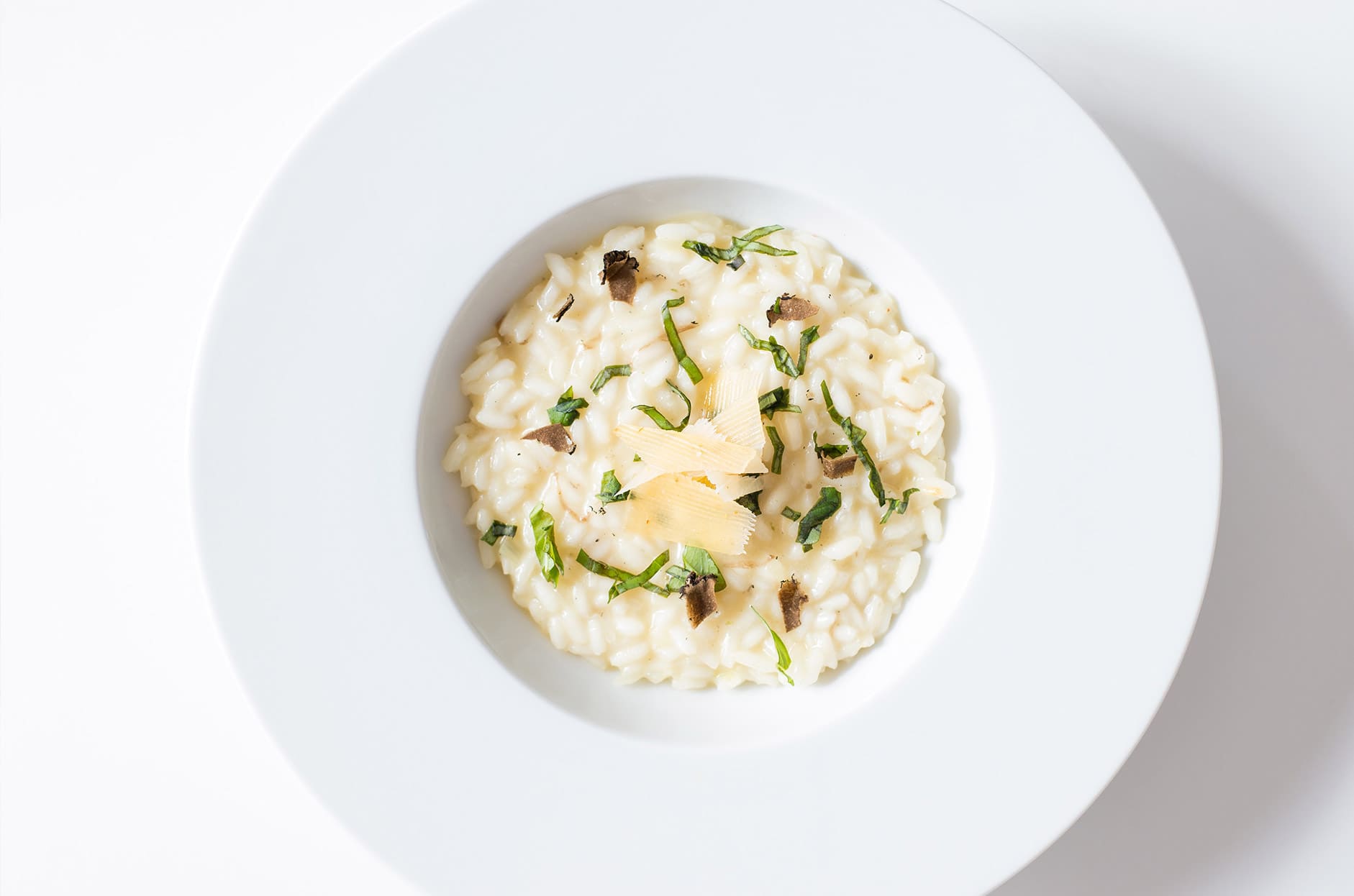Fragrant rices such as jasmine rice and basmati rice fall into this category. Mainly cultivated in South and Southeast Asia, long grain rice has the lowest starch content, resulting in dry grains that don’t cling to each other like other types of rice.
Jasmine rice has a light floral aroma and chewy texture, and is the primary rice for Thai dishes alongside curries, meat and fish meals.
Basmati rice on the other hand, has a grassy aroma and is the driest of them all. This rice is grown in the Himalayan foothills, and is the only type of rice that is aged. The aging process is what results in the off-white to golden hue of basmati rice, the more aged being more fragrant and prized. The dry, fluffy grains make basmati the perfect rice for airy pilafs and biryanis.
- Types: white and brown basmati, jasmine
- Characteristics: dry, firm, distinct grains
- Popular cooking methods: boil and drain method, absorption
- Used for: pilaf, biryani, curry, Indian, Palestinian and Thai cuisine
Other specialty rices
Glutinous rice
This is a type of rice that is particularly sticky, almost glue-like when cooked (contrary to what it sounds like, it does not contain gluten). It can be short, medium or long grain, and grown mainly in Southeast East Asia and South Asia countries. Glutinous rice is used for sweet and savoury foods such as rice cakes, mochi, sweet rice ball desserts and rice porridge amongst others.
Chinese black rice
Also known as forbidden rice, this is a whole grain rice grown in northern China and typically used for congee recipes. It is a medium grain rice that remains firm and is slightly sticky when cooked. Chinese forbidden rice gets its name from Ancient China when its scarcity - it has a mere 10% yield - made it a special rice reserved only for aristocracy.
Red rice
Red rice is a partially hulled, or un-hulled rice that has a red husk rather than the more common brown color. Nutty and slightly sticky, red rice is used in various dishes in Thai, Japanese, Philippine cuisines.
Wild rice
Not technically rice, wild rice is actually the seed of an aquatic grass growing in North America. Long, large grains, black-brown in colour, wild rice has a wonderfully nutty and chewy texture when cooked and works well in salad-type dishes.
What’s the difference between brown and white rice?
Brown or white rice is an indicator of how much the rice has been processed. White rice is simply brown rice milled to remove the bran and germ layers of the rice grains. These layers contain many of the nutrients of rice, making brown rice a better choice for extra fibre, vitamins and minerals.
Wholegrain, brown rice has a nutty flavour and chewy bite, and can be used in many recipes in place of white - think brown basmati, brown table rice - just remember to add to cooking times as it will take longer than its white counterpart.
Now that you've got it - our best rice recipes
Italian chef Gualtiero Marchesi's signature dish: a traditional Milanese saffron risotto made adding a precious golden leaf on top. Master this dish for all your Italofile friends.
A chewy, not-too-sweet rice dough made from glutinous rice flour is filled with a fragrant green tea filling in this Japanese dessert recipe.
3. Korean bibimbap recipe
This rainbow medley of vegetables with marinated beef, fried egg on top of rice, is the almost-perfect meal in a bowl.












